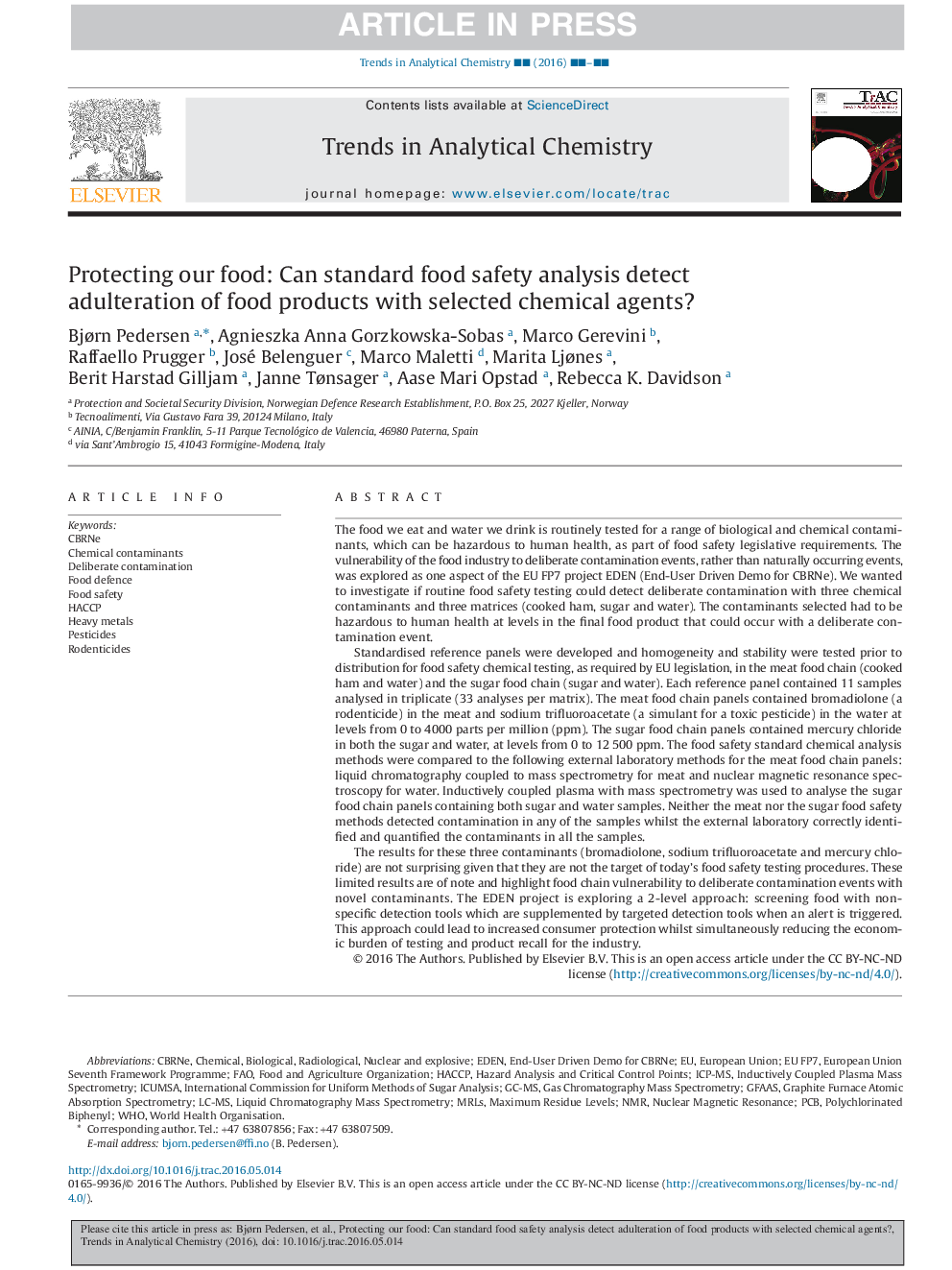| Article ID | Journal | Published Year | Pages | File Type |
|---|---|---|---|---|
| 5141785 | TrAC Trends in Analytical Chemistry | 2016 | 5 Pages |
Abstract
The results for these three contaminants (bromadiolone, sodium trifluoroacetate and mercury chloride) are not surprising given that they are not the target of today's food safety testing procedures. These limited results are of note and highlight food chain vulnerability to deliberate contamination events with novel contaminants. The EDEN project is exploring a 2-level approach: screening food with non-specific detection tools which are supplemented by targeted detection tools when an alert is triggered. This approach could lead to increased consumer protection whilst simultaneously reducing the economic burden of testing and product recall for the industry.
Keywords
MRLsCBRNERodenticidesEDENGFAASHACCPLC-MSPCBnuclear magnetic resonanceGC-MSpesticidesChemical contaminantsEuropean UnionFood safetyPolychlorinated biphenylhazard analysis and critical control pointsNMRmaximum residue levelsWorld Health OrganisationFood and Agriculture OrganizationGraphite furnace atomic absorption spectrometryGas Chromatography Mass SpectrometryLiquid chromatography mass spectrometryinductively coupled plasma mass spectrometryICP-MSFAOHeavy metalsWHO
Related Topics
Physical Sciences and Engineering
Chemistry
Analytical Chemistry
Authors
Bjørn Pedersen, Agnieszka Anna Gorzkowska-Sobas, Marco Gerevini, Raffaello Prugger, José Belenguer, Marco Maletti, Marita Ljønes, Berit Harstad Gilljam, Janne Tønsager, Aase Mari Opstad, Rebecca K. Davidson,
